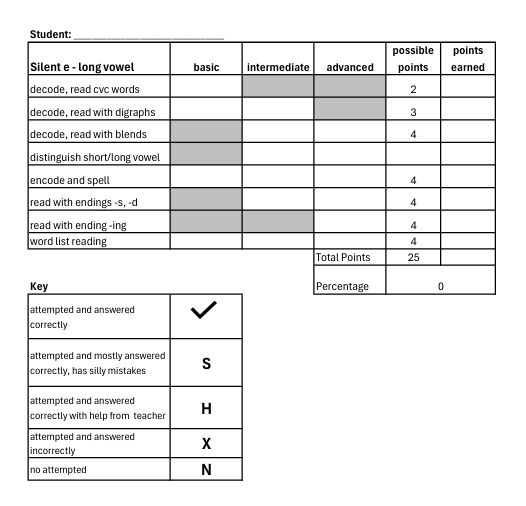Reading Interventions and The Thinking Classroom Framework
This week, I want to examine implementing the thinking classroom framework in a classroom for different instructional areas, specifically reading interventions in a Special Education setting for academic interventions or as Tier II interventions in the general education classroom. I want to discuss what this might look like and how data can be collected with fidelity and consistency.
To begin, I cannot see a way to apply a true thinking classroom framework to basic reading intervention instruction. Teaching basic reading skills involves some direct instruction, and it also involves reading practice. Practice reading activities, such as story reading, readers theater, word list reading, reading games or some other activity, are essential for building confidence and fluency, and the key is making sure students are not practicing errors. This is not something you can guarantee if students are working independently in groups without consistent support from the teacher, a paraprofessional or even a volunteer.
However, I do think there are some aspects of the thinking classroom framework that would be beneficial for students receiving interventions for basic reading skills. First, the rate yourself rubric would be very useful for students to see how they are progressing overtime. Second, the where you are and where you are going rubric set up for specific reading skills would provide a road map for students so they know what they are working towards. Third, working on vertical surfaces, consolidating from the bottom and taking meaningful notes would be useful during a small group decoding and spelling practice. The teacher can highlight and review skills previously taught and build up to the newer skill, thus creating opportunities for students to make connections and take meaningful notes as the teacher guides them through the review. Asynchronous hints and extensions would also be useful for decoding and spelling practice. The teacher can provide appropriate hints for students who need extra help and provide additional challenges to students who are ready for more. Finally, data can be collected in a few ways. Teachers can use a more traditional means of tracking fluency and accuracy, and they can also use the where you are and where you are going rubric to show how students are acquiring new reading skills.
Now, I recognize that the small group instruction on decoding and encoding, with an emphasis on phonological awareness, can be conducted on vertical surfaces, and possibly in small groups of two students. However, to ensure that students are not practicing errors, the teacher needs to be present and provide timely hints to guide students toward the correct spelling or reading of a word. If the students make errors, the teacher needs to use guiding questions to help students reevaluate and correct their answer. In addition, follow up questions pertaining to the same skill will need to be given so students are practicing and reinforcing the correction and not the error. This is a deviation from the framework and how teachers interact with students in a thinking classroom. There is less autonomy at this stage, but that is necessary to prevent students from practicing and reinforcing errors.
Below is a sample where you are, where you are going rubric for skills related to reading and spelling words with a silent e. This rubric would provide a framework for students so they know what to expect and what they are working towards. I would still maintain the same pieces of instruction that include phonological awareness, decoding, encoding, reading practice, in addition to taking data on reading silent e in context (progress monitoring). The difference would be the additional data on how well students are acquiring the individual skills, applying it to reading practice, and generalizing it to reading in context, a comparison data point. This would provide a more thorough picture of students’ progress and growth.
It is important to note that the data gathered from the where you are, where you are going rubric reflects how students are responding to the intervention and any adjustments made to the intervention. If students have memory issues, then a pattern of acquisition and needing help will emerge. If students have visual or auditory processing issues, a different pattern in the data will emerge, especially if the teacher distinguishes between visual and auditory exercises in the rubric. This information will inform adjustments to the intervention to accommodate the deficit that has been revealed. In addition, all of this information is critical if Special Education testing is being considered. It will help inform the testing process and what areas need to be closely examined to determine disability and eligibility, especially when the data is compared to the reading in context data.
These ideas are a shift away from the traditional intervention model. Teachers may feel that the rubric is more work, but if they already take frequent notes on students’ response to interventions, then they could simplify that process by just entering a quick score in the rubric for each skill. Then teachers would know with a quick glance which students still need cuing and which students are more independent.
© 2025 Linda Patrell-Kim


